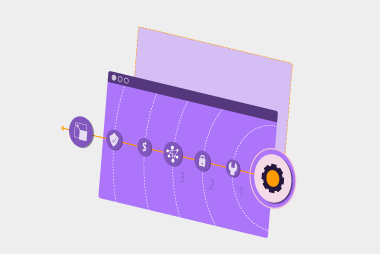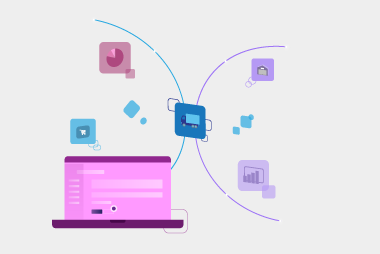Electronic Data Interchange (EDI) enables seamless data exchange and facilitates efficient supply chain management. As businesses in Australia and New Zealand continue to embrace EDI, selecting the right EDI service provider becomes a critical decision. The market offers a few providers, and making the right choice can significantly impact a company's success. In this blog, we will explore the essential factors to consider when choosing an EDI service provider in the ANZ region.
Industry expertise
One of the most critical factors to consider is whether the EDI service provider has expertise in your specific industry. Different industries have unique requirements and compliance standards. An EDI provider with experience in your industry will understand these nuances, ensuring a smooth implementation process and providing tailored solutions that align with your business needs. MessageXchange has been helping businesses in retail, supply chain, manufacturing and more, excel with EDI for more than 20 years.
Scalability and flexibility
As your business grows, your EDI requirements may evolve as well. It is crucial to choose a provider that offers scalable solutions, capable of accommodating increasing transaction volumes and expanding business needs. A flexible EDI service provider can adapt to your changing requirements, saving you the hassle of switching providers down the line.
Integration capabilities
The EDI service provider should be able to seamlessly integrate with your existing systems, such as Enterprise Resource Planning (ERP) software, Warehouse Management Systems (WMS), and other business applications. Integration simplifies data exchange, reduces manual intervention, and enhances operational efficiency across your organisation. Check with your prospective EDI provider what they support for you both now, and as your business grows.
Compliance and security
EDI involves the exchange of sensitive business data. Therefore, data security and compliance are all important factors. Ensure that the EDI service provider adheres to industry-standard security practices and complies with data privacy regulations. Like MessageXchange, look for certifications such as ISO 27001 to confirm their commitment to data security.
Customer support and reliability
Prompt and reliable customer support is crucial when dealing with EDI. Like MessageXchange, look for providers with locally based support teams for fast acting support. Check customer reviews and testimonials to gauge the reliability and responsiveness of the EDI service provider.
Customer support and reliability
Prompt and reliable customer support is crucial when dealing with EDI. Like MessageXchange, look for providers with locally based support teams for fast acting support. Check customer reviews and testimonials to gauge the reliability and responsiveness of the EDI service provider.
Cost and pricing model
Evaluate the pricing model of the EDI service provider. Some providers charge per transaction, while others offer subscription-based pricing. Consider the cost implications based on your transaction volume and choose a pricing model that aligns with your budget and business strategy. Be aware of any hidden fees or additional costs that may apply.
Interoperability with trading partners
In the interconnected world of EDI, the ability to collaborate with multiple trading partners is crucial. Ensure that the EDI service provider has a robust network of trading partners across Australia and New Zealand, as well as globally. Compatibility with various EDI standards, such as EDIFACT and XML, is essential for seamless data exchange.
Implementation and onboarding process
The onboarding process should be well-structured and efficient. A reputable EDI service provider will have a clear implementation plan and dedicated support to guide you through the setup phase. Avoid providers that promise quick setup without proper planning, as this may lead to complications later on.Want to learn more about how MessageXchange can help with your EDI needs? Ask our experts by getting in touch below.
Request a call
Chat with one of our experts
Just fill out your details below and we'll be in touch within one business day.











